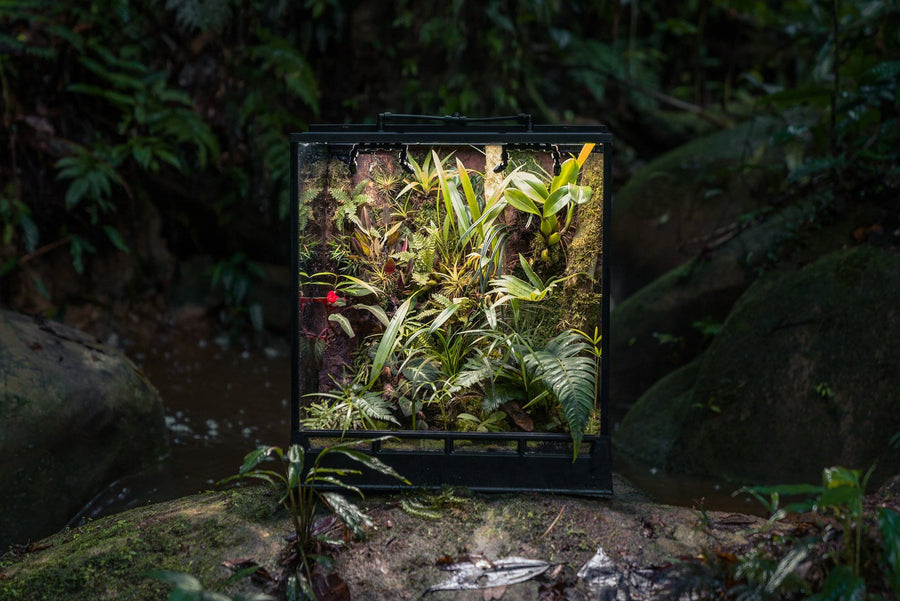Pilea
The Pilea genus is native to tropical and subtropical regions around the world—Asia, Central and South America, Africa. These plants range from tiny creeping ground covers to larger, upright varieties. Their natural habitats vary from misty forest floors to rocky mountain slopes, which explains why some species want high humidity, while others prefer it dry and airy.
How often should I water a Pilea?
This plant doesn’t like wet feet, but it also resents being bone dry. The sweet spot is letting the top 1–2 inches of soil dry out before watering thoroughly. In spring and summer, that might be weekly; in winter, every two to three weeks may suffice.
Use pots with drainage holes and always empty the saucer after watering. Bottom-watering (placing the pot in a shallow tray of water and letting it soak for 10–15 minutes) can be a good way to hydrate without overdoing it.
What temperature and humidity do they need?
Pilea is comfortable in the same temperature range most humans like, between 16°C to 27°C. Whilst some varieties enjoy terrarium conditions, most doesn’t enjoy humidity levels between 40–60%.
Avoid cold drafts (like near an window) and hot, dry air (like above a radiator). These extremes can cause leaves to curl or drop prematurely.
How should I fertilise my Pilea?
Feed your Pilea once a month during spring and summer with a balanced liquid fertiliser diluted to half-strength. A 10-10-10 or 20-20-20 formula works well. In autumn and winter, skip feeding as your plant is slowing down and won’t use the extra nutrients.
When it comes to Pilea, overfeeding is worse than underfeeding. Too much fertiliser can cause leaf burn, salt buildup, and eventually stress the roots.

When and how should I repot a Pilea?
Repot when your Pilea is rootbound (you’ll notice roots circling the bottom of the pot or growing out of drainage holes).
Use a pot that’s only 1–2 inches wider than the current one. Too big a jump can result in the soil staying wet too long, stressing the plant.
What kind of soil does a Pilea prefer?
Pilea prefers a light, fast-draining soil mix that keeps roots aerated. Regular potting soil is too dense. We would suggest using our Simply Houseplant Mix as it provides a great medium for fast-growing roots.
Avoid compost-heavy mixes or garden soil. These retain moisture too long and compact over time, both of which are problematic for Pilea’s shallow root system.
What common problems should I watch for?
Leggy Growth
If your Pilea is growing tall with long spaces between leaves, it's not getting enough light. This "stretching" is the plant reaching for more sun. Move it closer to a bright, indirect light source—near a window but out of direct sun. Rotate it every few days to keep growth even.
Yellow Leaves
Yellowing leaves are usually a sign of overwatering or poor drainage. Check the soil—if it’s soggy, let it dry out before watering again. Make sure your pot has drainage holes, and use a well-draining potting mix. If the roots are sitting in water, they can rot.
Leaf Curl
Leaves curling inward or downward often means inconsistent watering or low humidity. Try to water on a regular schedule, keeping the soil lightly moist but not soaked. If the air in your home is dry, especially in winter, consider using a humidity tray or small humidifier nearby.
Brown Spots
Brown, crispy patches on the leaves can be a sign of too much direct sun—your Pilea may be getting scorched. Move it out of harsh sunlight. If you’re seeing brown edges or spots without full sun exposure, salt buildup from fertilizer might be the issue. Try flushing the soil with clean water every month or so to rinse out excess salts.
Pests
Pileas are fairly pest-resistant, but they’re not immune. Watch out for:
-
Fungus gnats (tiny black flies around the soil)
-
Spider mites (fine webbing and speckled leaves)
-
Mealybugs (white, cottony clumps)
Catching these pests early makes them easier to manage.
Pilea is an expressive genus and reacts quickly to changes. Whether it’s leaning toward light, dropping leaves, or pushing out new pups, it’s constantly telling you what it needs.
Looking to expand your Pilea collection?
Pileas are easy to love and even easier to grow when you know what to watch for. Ready to add more to your indoor jungle?






